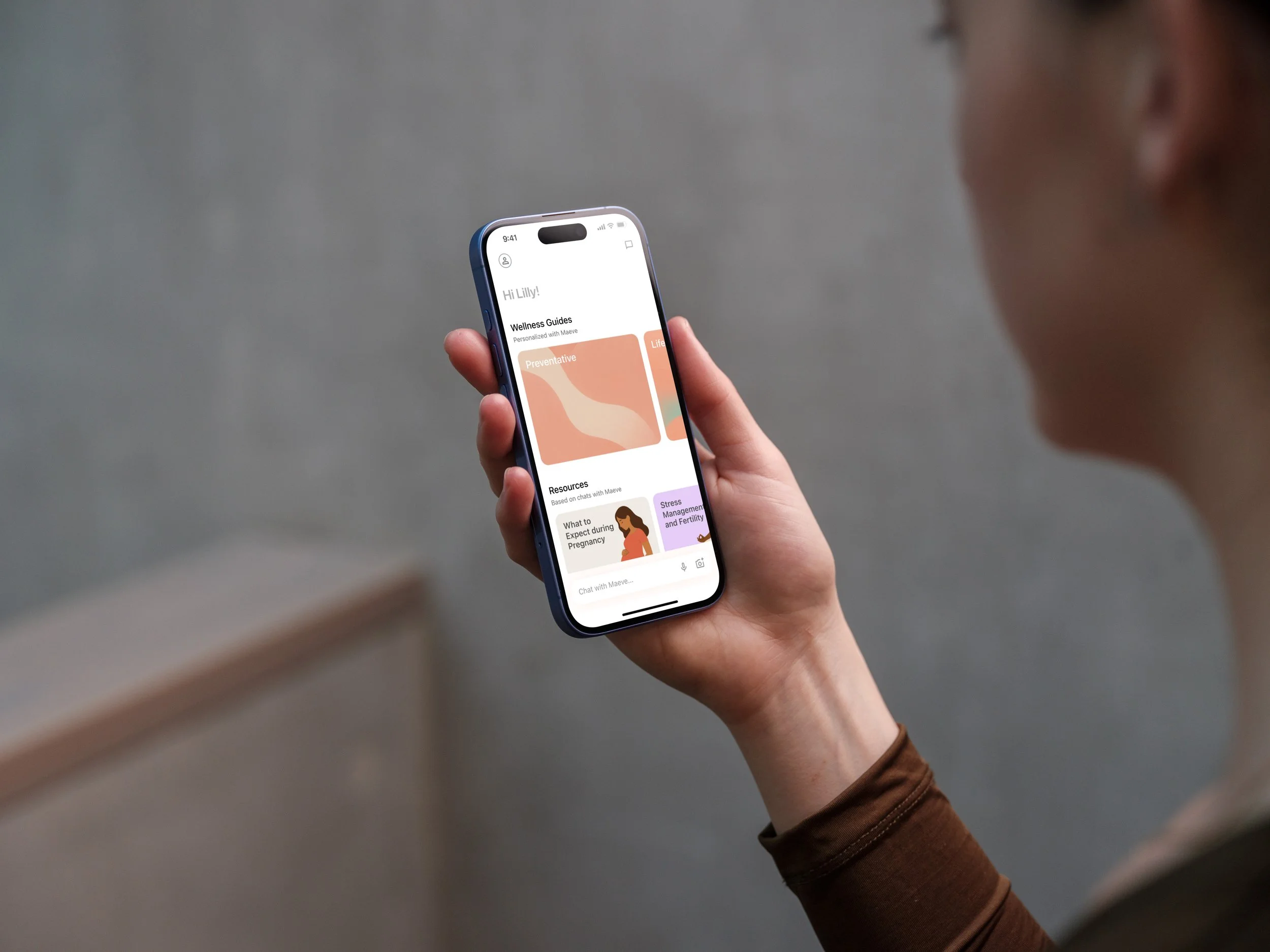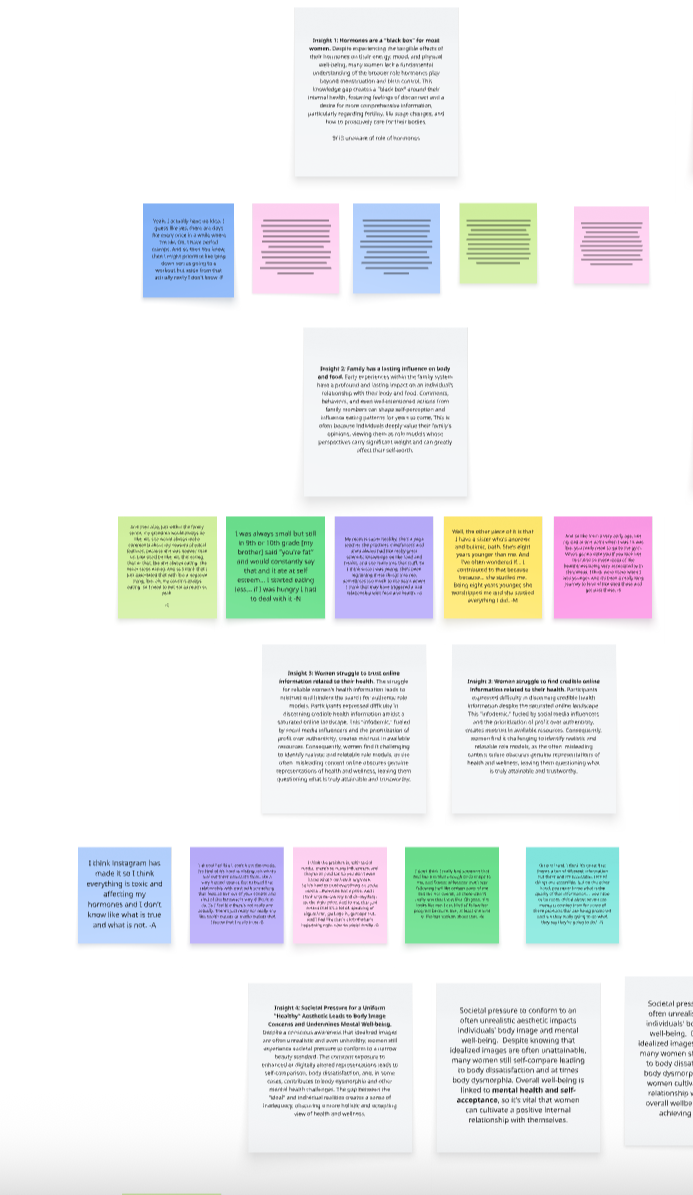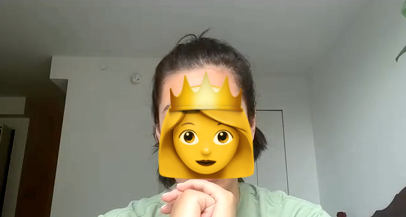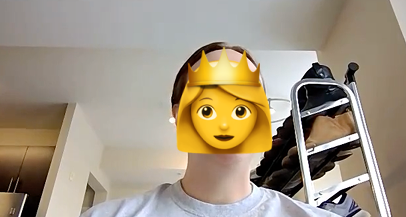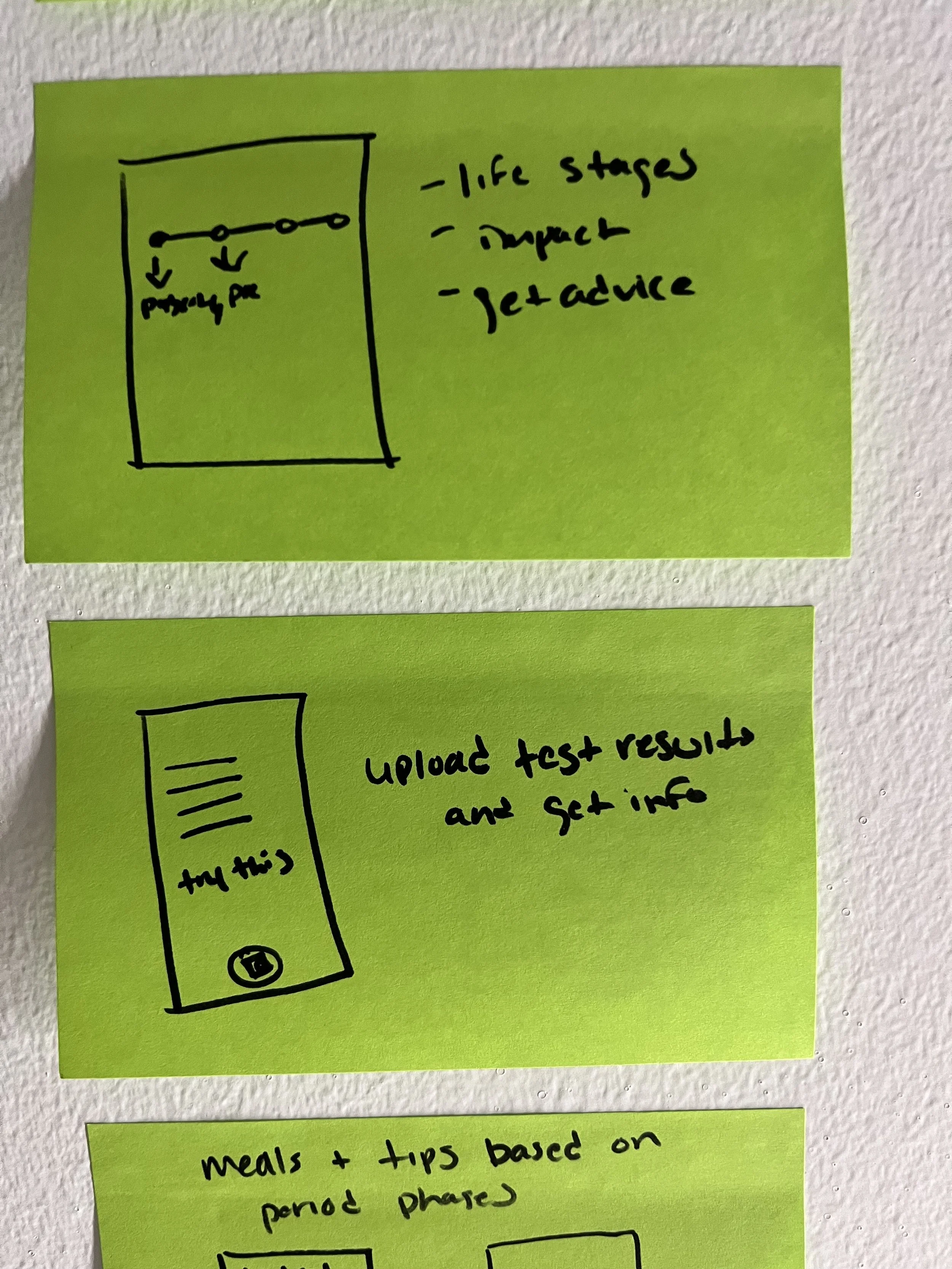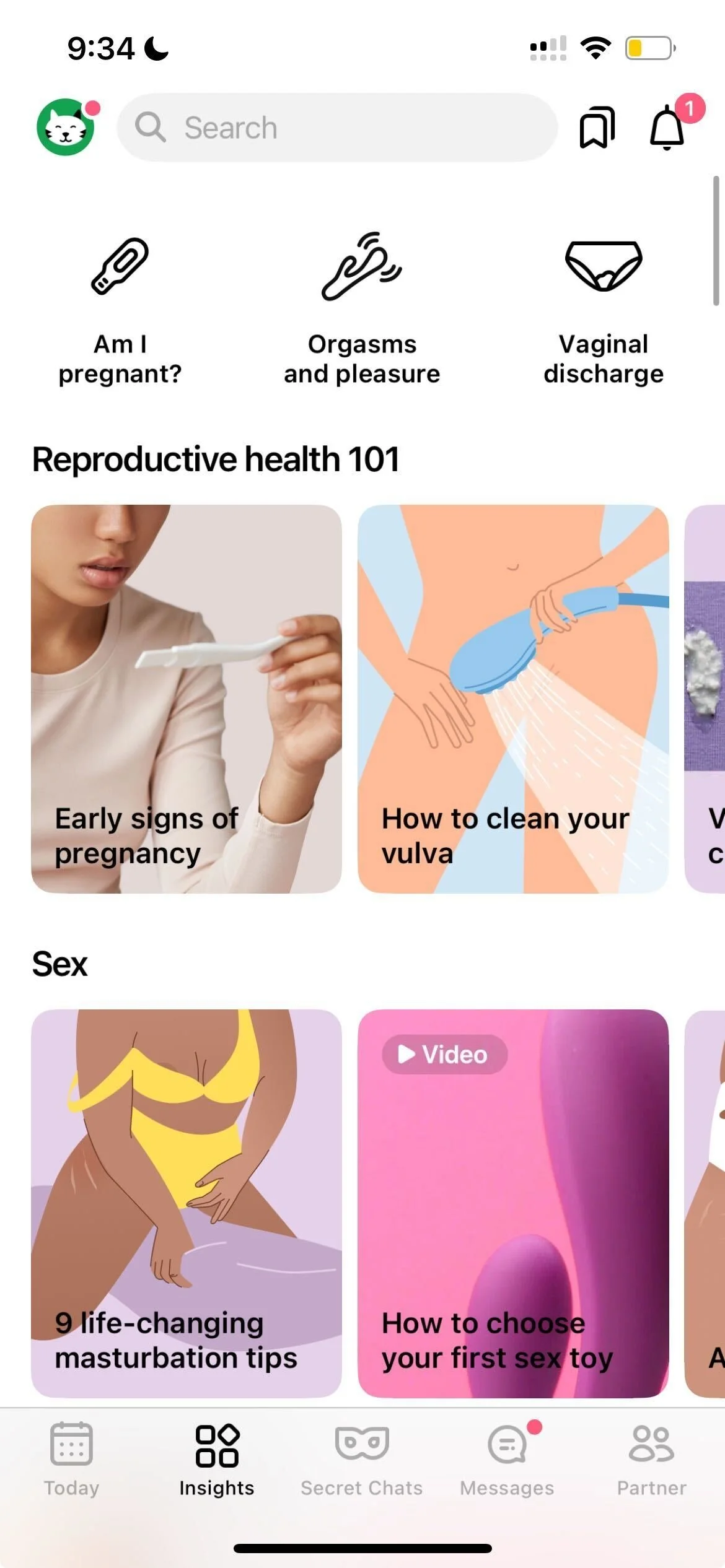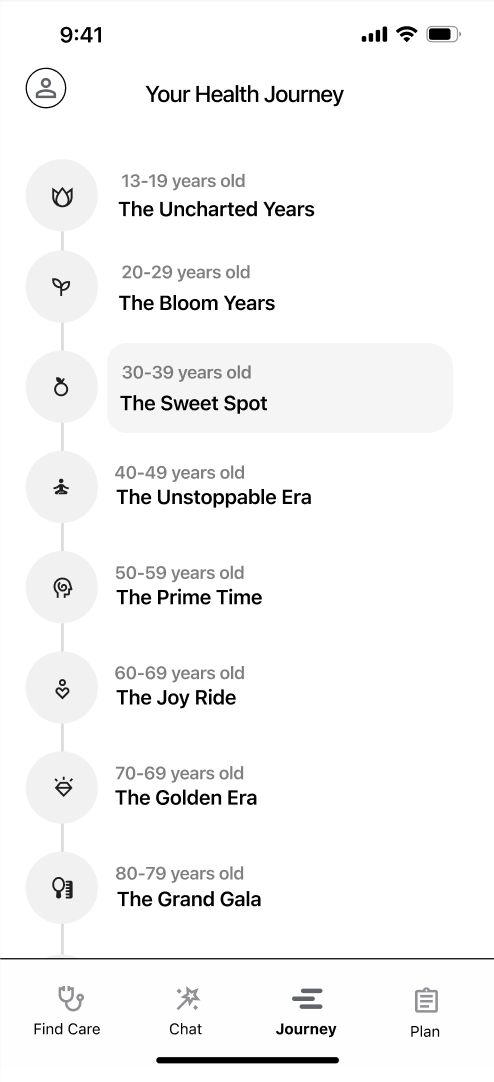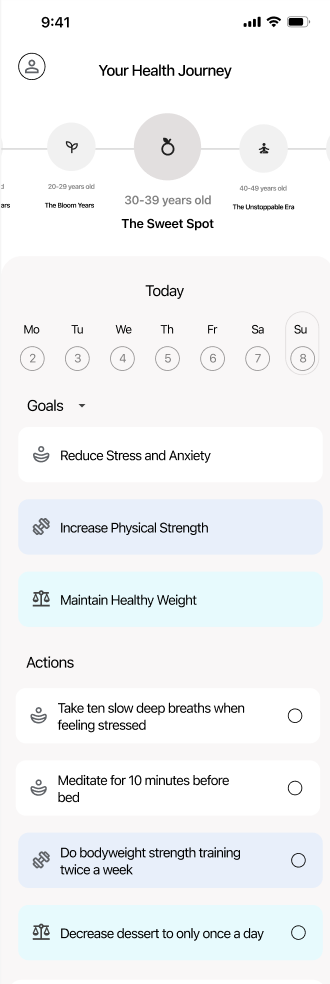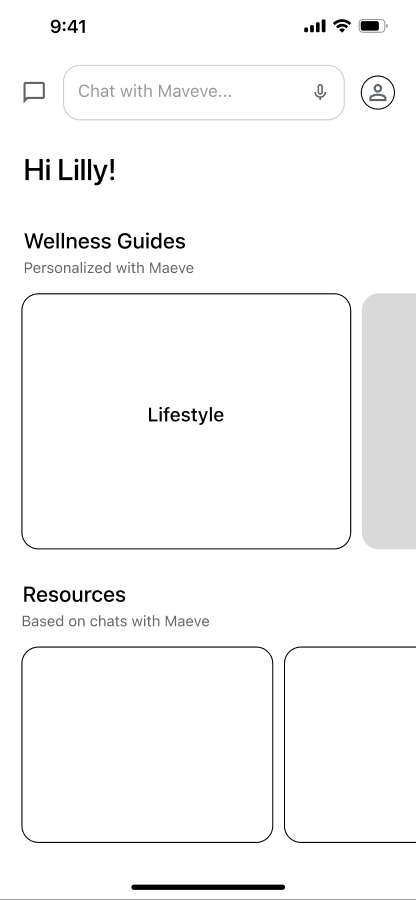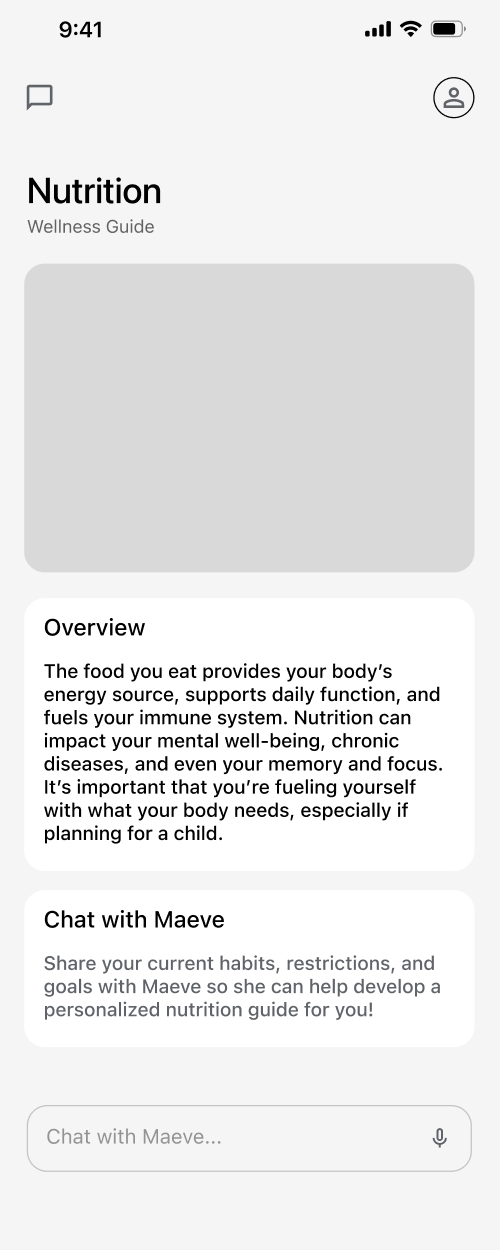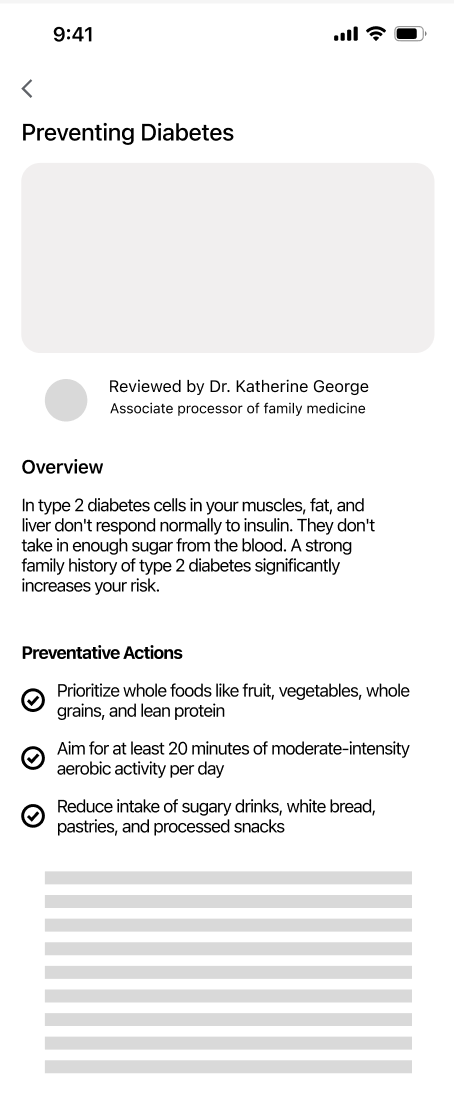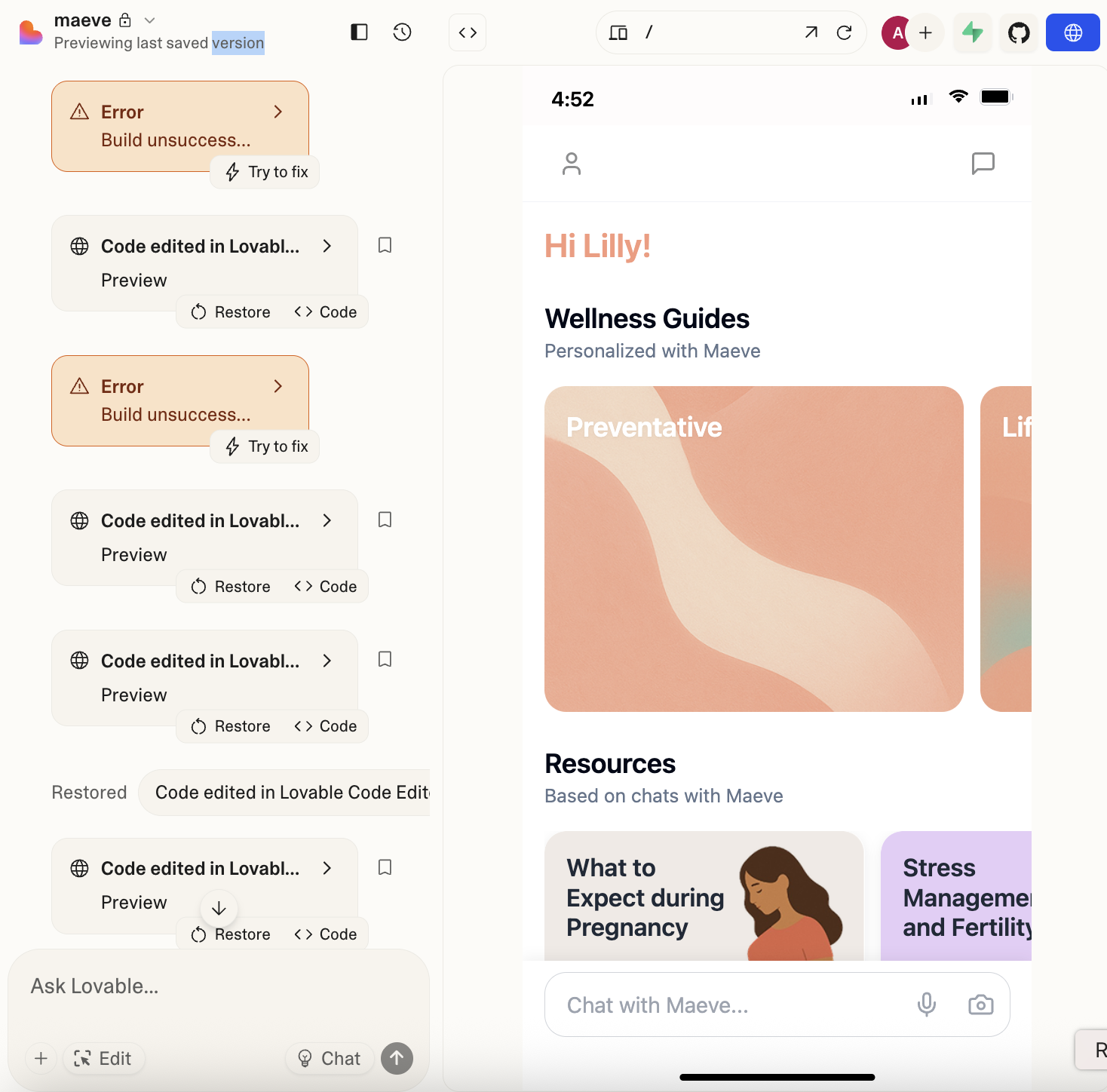Detailed Process for “Maeve Health”
Why Women’s Wellness?
Growing up with strong, intelligent, and wonderful women inspired me to help motivate other women. A few years ago, I started an instagram page where I created posts similar to what you see here! I simply enjoy empowering and helping other women.
I went into my research for this project with an open mind and open-ended questions, looking to see what pain points naturally came up.
Qualitative Research
I interviewed 24 women, one-on-one, virtually, and in person, including former athletes, mothers, women who struggled with eating disorders, and women with chronic health conditions.
Interview topics included health challenges, societal impact, body image, and health tools.
*This research was also used to influence my project, “Your Inner Critic.”
Research Synthesis
Participant Clustering
I used Miroboard for analysis. After each interview, I bucketed what I heard for each participant into categories such as challenges, wishes, and needs.
Themes and Patterns
To help me narrow down what was important, I tracked recurring themes, with supporting quotes, as I interviewed more participants.
Insights
Finally, I was able to think further about the motivations and “whys” of the participants to help confirm a specific design direction.
Insights
Societal pressures take a toll on mental health
Despite knowing that idealized images are often unattainable, many women still self-compare leading to body dissatisfaction and at times body dysmorphia. This can shift their focus to achieving an external ideal instead of cultivating a positive internal relationship with themselves in order to improve their overall well-being.
Credible health info is difficult to come by
Many women expressed difficulty in finding credible health information despite the saturated online landscape. This “infodemic,” fueled by social media influencers creates mistrust in the online resources. Additionally, misleading content obscures genuine representations of health and wellness, leaving them questioning what’s actually attainable.
Hormones are a “black box”
Many women lack a fundamental understanding of the role hormones play beyond menstruation and birth control. This knowledge gap creates a "black box" around their internal health, creating feelings of disconnect and a desire for more holistic information, particularly regarding fertility, life stage changes, and how to proactively care for their bodies.
Chosen Insight
Hormones are a “black box.” Over 70% of the women I spoke with, mentioned that hormones were a black box for them, but that they wanted to understand more. It was clear to me that holistic health guidance beyond period and mood trackers was missing for women. I wanted an opportunity to fill this gap and help women receive reliable and personalized health information.
“It would be great if there was a timeline across the span of a woman’s life, and it was even personalized. It’s [says] at this point in your life you are going to start your period. These are things you should know. At this point if your life, this is going to happen. These are things you should think about.”
Female, 31
“[I want a] single app that I could go to learn about various resources in different stages of a woman’s life. So, for teenagers, puberty. For us, the 20 and 30 year olds it’s about fertility and maybe dating and screenings. For 40s and 50s it’s about executing those screenings and maintenance.”
Female, 32
When asked about hormones:
“Yeah, I actually have no idea. I guess like yes, there are days every once in a while where I’m like oh, I have period cramps and so then I might prioritize lying down versus going to workout but aside from that I actually really don’t know.”
Female, 28
Based on the “how might we”: “how might we translate hormonal information into practical and actionable insights for women so they can improve their overall well-being?” I brainstormed several ideas.
Ideation
I brainstormed ideas in different categories, and knew I wanted to focus on providing credible information.
Additionally, I knew I wanted to focus on highlighting the life stages a woman goes through.
Inspiration
I was inspired by apps like Flo, a period tracking app and Caria, a menopause symptom tracking app, because they provided a lot of educational resources for women. I wanted to know how I could create something similar that wasn’t centered around tracking.
Flo App
Caria App
Prototyping
Because there are enough period tracking and symptom tracking apps, I did desk research on gaps in the market and found that many women don’t know what specialists or care they may need as they get older.
I wanted to explore this option and initially focused on creating an app where women could find the content they needed, but also find the care they might.
I started my process with paper wireframes, drawing inspiration from female tracking apps and also care apps like ZocDoc.
Digital Wireframes
I started with a navigation bar that provided the option to find care, chat with AI, see a life journey, and create an action plan. The health journey screen shown here was meant to provide women with the information they needed at each stage.
I decided this life stage depiction was important because it was a recurring theme. Women wanted specific information, given their life stage.
When a user clicked into a life stage, they were shown an overview, with actions, and a top menu to switch to content.
I wanted a way to communicate information a woman might need to know during a specific time of her life and experimented with this overview page.
The content tab ranged in types of content, showing podcasts to audiobooks on women’s health along with personalized content.
Education is key in this app. Many other apps showed content in a similar format, but I wanted to explore different ways to consume women’s health information besides reading.
Most importantly, the app contained an option to find care. Women can see which specialist might help and why, and resources to help prepare them.
Again, my market research confirmed that finding women’s health care was a gap in the market, so I experimented with a care page.
Iteration
I received feedback that the journey page depicting life stages was too static, so I wanted a way to make it more dynamic.
Additionally, I started focusing more on the plan page. If the app was providing advice, how could women keep track of it? This screen focused on helping women track their goals and immediate actions while seeing their stage of life.
Testing & Feedback
“I’m not much of a tracking person.”
“The two timelines can be confusing.”
“I’d use the content page most.”
For testing, I focused mainly on the plan page shown above and the content page that opened when you selected a life stage. I received similar feedback on the 5 women I spoke with. I realized that focusing on tracking goals probably wasn’t the way to go since 4/5 women mentioned that they usually don’t track health goals. Similarly, 4/5 mentioned that they’d use the content page most.
A moment of reflection
After chatting and receiving feedback from a mentor, I realized that my app lacked focus. The app contained content, a way to search for providers, track goals, and chat with an AI guru. It didn’t have an anchor. I took time to reference my primary research again to really understand the problem.
The problem is that women lack comprehensive and personalized resources that provide proactive, holistic health guidance, and trusted information. Having this allows them to be informed and make proactive health decisions. This needed to be my focus, not finding care or helping women track goals.
After conducting desk research, I found that the use of AI chatbots have increased from 30% to 40% from 2024 to 2025. Additionally, over 40% of women use AI chatbots like ChatGPT for work and personal purposes.
Based on this research, I made the hypothesis that women would share their information with an AI bot in order to get personalized plans that evolved as they continued to develop a relationship with the AI bot, and this is what I wanted as my anchor.
This led to my current iteration.
Current Iteration
Design Decisions
Given the previous feedback on the complexity of my app, I wanted this iteration to be as simple as possible, focusing on the core problem.
To keep it simple, the app will have no main nav bar. The user gets onboarded by Maeve because women usually communicate by texting or talking. It added a human and compassionate element over pressing buttons or answering questionnaires.
Once onboarded, women only see their guides and resources specific to their chats on the home page. I kept resources because this was a section women liked during research. However, I kept it minimal so it feels personalized.
Additionally, I decided the CTA will always be to chat with Maeve and left it as the nav bar on every page.
I decided that women need to answer questions via Maeve before receiving each guide. This is to ensure each guide is personalized, prevent the initial onboarding from being too long, and build trust with Maeve.
I left the content page fairly similar, focusing on the fact that it’s been reviewed by a health expert, to show that it’s reliable information.
Designing with Lovable
I created some initial interactions in Figma but wanted more of a working prototype, so decided to explore with Lovable.
My workflow included uploading my Figma wireframes into Lovable and communicating with Lovable what I wanted to build. That said, I mainly asked ChatGPT or Claude for code help and edited the code directly in Lovable.
There were still a few interactions I was not able to achieve in Lovable, such as a smart animate effect from the hero images on the home page to the following page. I also had several issues regarding the IOS keyboard and screen resizing when testing on my phone.
Overall, there’s always work to be done. I’ll continue iterating and making an actual working prototype where any user can onboard and receive a personalized guide.

